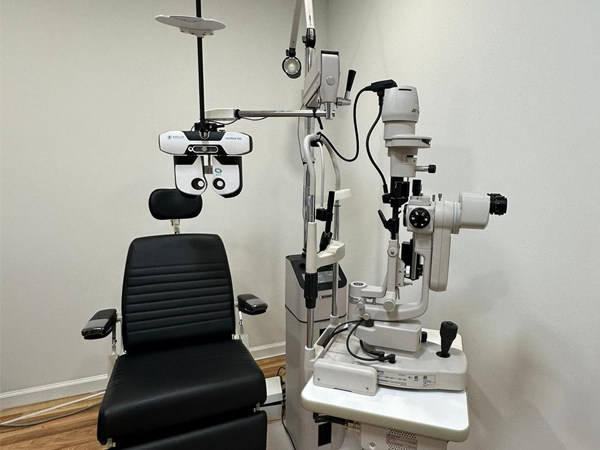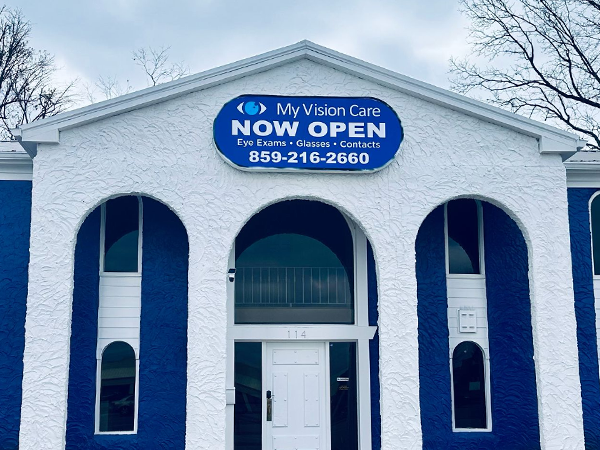Eye Glasses & Contact Lenses

Beginner’s Guide to Contact Lenses
Trying contact lenses for the first time can be a bit daunting. The idea of placing something in your eye might make you uneasy. But don’t worry, we’re here to guide you through it, starting with your contact lens exam. This guide will walk you through each step of the exam and explain what to expect.
The exam begins with a general eye check-up to ensure your eyes are healthy. The eye care professional will measure your eyes to determine the appropriate size and type of lens for you. They’ll also assess your vision to see if you need correction for nearsightedness, farsightedness, or astigmatism.
The Comprehensive Eye Exam
Your eye doctor will begin by assessing your overall eye health and vision. This includes discussing your health history and performing tests for focusing, depth perception, color vision, and pupil response. They will also check for glaucoma, examine your retina and optic nerve, and determine if contact lenses can improve your vision.
Discussing Your Contact Lens Preferences
If contact lenses are suitable for you, your doctor will discuss your preferences. Do you want to enhance or change your eye color? Would you prefer daily disposable lenses or overnight contacts? Understanding the benefits and drawbacks of each option helps you make an informed choice. If you’re over 40, age-related vision changes and suitable contact lens options will be covered.
Measuring Your Eye Surface
Precise measurements are essential for a proper fit. Using a keratometer, your doctor will measure the curvature of your cornea. The size of your pupil will be measured with a card or ruler to ensure the best match.

Final Steps and Fitting for Contact Lenses
Tear Film Evaluation and Fitting Process
If you have dry eyes, your doctor may perform a tear film evaluation to see if contact lenses are suitable for you. Some newer lenses can help with dry eyes by delivering moisture.
Next, precise measurements of your cornea and pupil are taken. A trial pair of contact lenses will then be fitted to ensure proper alignment and movement. If everything looks good, a final prescription check is done.
You’ll wear the trial lenses for a week, then return for a follow-up to confirm they fit well and meet your vision needs. After this, you can order your supply. Throughout the process, your optometrist will guide you and answer any questions, ensuring you are comfortable with your new lenses.
Frequently Asked Questions About Comprehensive Eye Exams Lexington KY
1. Why is it important to have an annual comprehensive eye exam Lexington KY?
An annual comprehensive eye exam Lexington KY helps detect eye conditions early, even without symptoms. Conditions like glaucoma can be managed better with regular exams.
2. What happens during a comprehensive eye exam Lexington KY?
During a comprehensive eye exam Lexington KY, your eye doctor Lexington KY evaluates eye health, vision quality, focusing, tracking, eye teaming, and depth perception.
3. How can modern lifestyles affect our vision?
Extensive screen use strains eyes, leading to headaches and discomfort. Regular exams help address these issues with corrective lenses or Vision Therapy.
4. What are some signs that I might need a new prescription?
Signs include headaches, eye strain, difficulty focusing, and blurry vision. Schedule an exam with your optometrist Lexington KY if you notice these.
6. How do systemic health conditions like diabetes affect eye health?
Yes, annual exams are key for monitoring eye health, even without lenses, as many conditions go unnoticed without evaluation.
7. What is Vision Therapy, and who might need it?
Vision Therapy corrects vision problems and improves visual skills, often for those with screen-related difficulties.
8. What additional tests might be needed for complex visual issues?
Tests for strabismus, amblyopia, convergence insufficiency, and excess may be needed for specific visual disorders.




